
When tackling weekend projects or home improvement tasks, Home Depot often feels like the default first stop. It’s undeniably convenient, offering a vast array of tools, supplies, and materials that can make almost any DIY dream feel within reach. From stocking up on light fixtures and area rugs to grabbing essential gardening supplies, the popular chain has certainly earned its place in the homeowner’s toolkit.
However, a common misconception is that Home Depot is a one-stop shop for *all* your home improvement needs. While it excels in many areas, not every item on its shelves represents the best value or quality, especially when it comes to larger, more critical components of your home. It’s crucial to understand where to save and where to invest, and sometimes, that means looking beyond the big orange box.
To help you make smarter decisions and avoid potential headaches down the line, we’ve consulted with contractors and other seasoned experts. They’ve shared their candid advice on several items you should seriously reconsider buying at Home Depot, outlining common pitfalls and offering valuable insights into where to find superior alternatives. Let’s dive into the first half of these expert-backed warnings, empowering you to make choices that truly enhance your home.
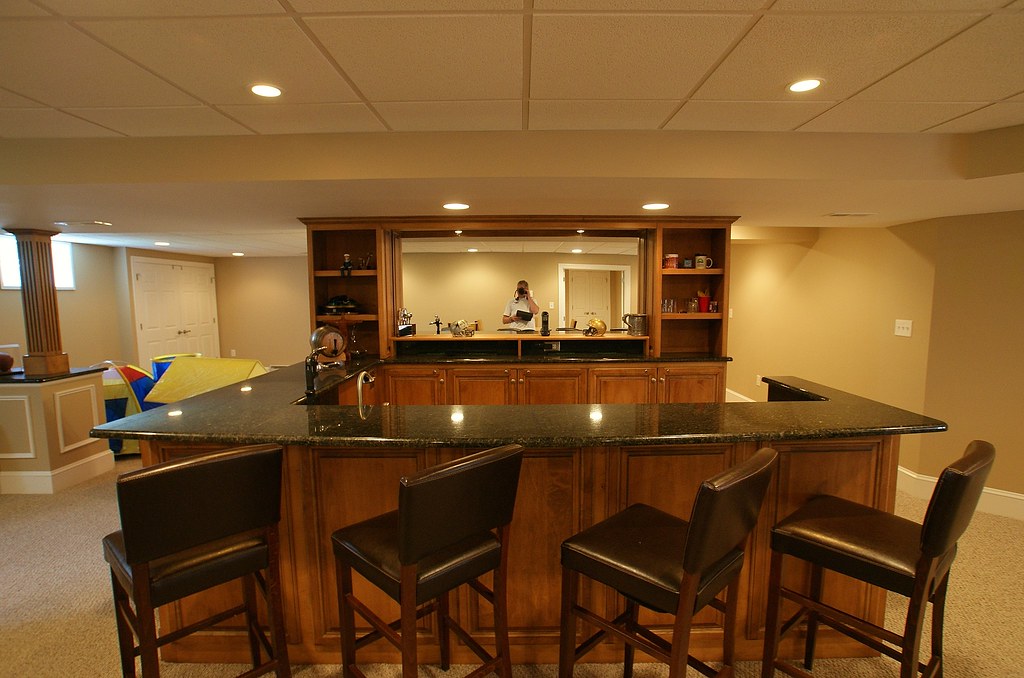
1. **Cabinetry**It’s incredibly tempting to envision a brand-new kitchen and pick out a complete cabinetry setup straight from the Home Depot showroom. The convenience of one-stop shopping and seemingly competitive prices can be very appealing when you’re eager to transform your space. However, contractors universally warn that this might not be the wisest investment for your home.
Thomas Borcherding, a residential remodeling contractor and owner of Homestar Design Remodel, minced no words when he stated, “Personally, I believe that Home Depot’s cabinetry services leave much to be desired in terms of both design and build quality.” This isn’t just a matter of aesthetics; it speaks to the fundamental structural integrity and thoughtful functionality that quality cabinetry should provide. Poor design can lead to awkward layouts, while subpar build quality often translates to doors that don’t close properly, drawers that stick, and finishes that wear prematurely.
Instead of settling, Borcherding highly recommends a more personalized approach. He advises, “I highly recommend you reach out to a local cabinetry dealer that offers in-house design services.” These local specialists often provide a level of expertise, customization, and attention to detail that national chains struggle to match. They can help you achieve a truly tailored kitchen that is not only beautiful but also built to last, perfectly suiting your space and lifestyle.
Read more about: 10 Genius Garage Storage Solutions That Instantly Reclaim Your Floor Space

2. **Major Home Appliances**Home Depot boasts an extensive selection of major and small home appliances, and you can sometimes find them offered in bundles that appear to be fantastic deals. The thought of outfitting your kitchen or laundry room all at once, potentially saving a few dollars, is certainly attractive. Yet, beneath the surface of these seemingly good offers lies a critical detail that could turn a great deal into a significant frustration.
Thomas Borcherding issues a strong warning when it comes to these purchases. “I strongly discourage the purchasing of appliances from Home Depot,” he states. His primary concern centers on their refund policy, which he finds woefully inadequate for such significant investments. Home Depot only offers a 48-hour return window for major appliances, a timeframe that Borcherding believes is far too short.
In reality, 48 hours is often not enough for most people to unpack, install, and thoroughly test a new appliance, let alone discover any latent defects that may be present. Imagine the frustration of realizing your brand-new refrigerator has a faulty ice maker or your dishwasher leaks only after the return window has slammed shut. For items as crucial and costly as home appliances, you need ample time to ensure they function perfectly, making a more flexible return policy an absolute necessity for peace of mind.
Read more about: The Electric Pickup Truck Showdown: A Comprehensive Review of Ford F-150 Lightning and Tesla Cybertruck

3. **Ready-Made Doors and Windows**The aisles at Home Depot are filled with a wide variety of ready-to-install doors and windows, promising a quick and easy solution for your renovation or replacement needs. The prospect of grabbing a standard size and simply fitting it into your existing opening is appealing, particularly for DIY enthusiasts. However, contractors caution that this convenience often comes at a steep price, both immediately and in the long run.
Wes True, general manager at Pella Windows & Doors of Omaha and Lincoln, consistently advises clients against these ready-made options. He explains, “They are made to fit ‘most’ openings, but very few homes have square windows (or average sizes), particularly in older properties.” This crucial mismatch means that while a ready-made unit might seem close enough, an improper fit can lead to a cascade of problems, including drafts, significant energy loss, and even moisture buildup, compromising your home’s comfort and structural integrity.
True has witnessed countless customers lured by a seemingly great deal, only to discover unexpected costs later. He points out that what initially appears to save “hundreds less” can easily escalate to “hundreds more when alterations are necessary during the installation process.” Beyond the immediate installation woes, he adds a stark warning: “Note that air leakage from a poorly fitting door or window can account for a significant annual cost required to heat and cool your home, not to mention water issues.” This highlights the hidden financial drain a bad fit can cause over years.
To circumvent these issues, True strongly recommends partnering with an established local dealer or a custom millwork shop. These specialists will “take measurements, build, and install doors and windows according to master plans,” ensuring a precise fit, optimal thermal performance, and long-term durability tailored to your home and climate. Investing more upfront in a custom solution can prevent costly energy bills, maintenance headaches, and the need for premature replacements, offering greater comfort and lasting value.
Read more about: Unlock A-List Living: 15 Budget-Friendly Decor Secrets to Style Your Home Like a Celebrity for Under $1000

4. **General Flooring Materials**When it’s time to update your home’s flooring, Home Depot certainly presents a vast array of options, from hardwood to laminate and everything in between. The convenience of seeing many styles in one place can make it seem like the ideal spot to finalize your flooring purchase. However, experts suggest that while variety is available, truly higher-quality materials and expert advice are often found closer to home.
Thomas Borcherding advises against making these significant purchases from national chains. He asserts, “There is no need to make flooring purchases from a national chain when dozens of locally-owned, high-quality flooring dealers exist around you.” His guidance isn’t just about supporting local businesses, though that’s a welcome bonus. It’s fundamentally about securing a superior product and service experience.
The real advantage of local flooring dealers, Borcherding explains, often lies in their ownership and staff. He notes, “Flooring installers, due to the grueling nature of the trade itself, often retire from installation and instead open up their own flooring showroom as flooring dealers.” This means you’re consulting with individuals who possess years of firsthand installation experience. They can offer invaluable insights into durability, appropriate materials for your specific needs, and installation nuances, ensuring you select flooring that truly stands the test of time and traffic.
Read more about: 12 Costly Home Upgrades That Actually Shrink Your House’s Resale Value
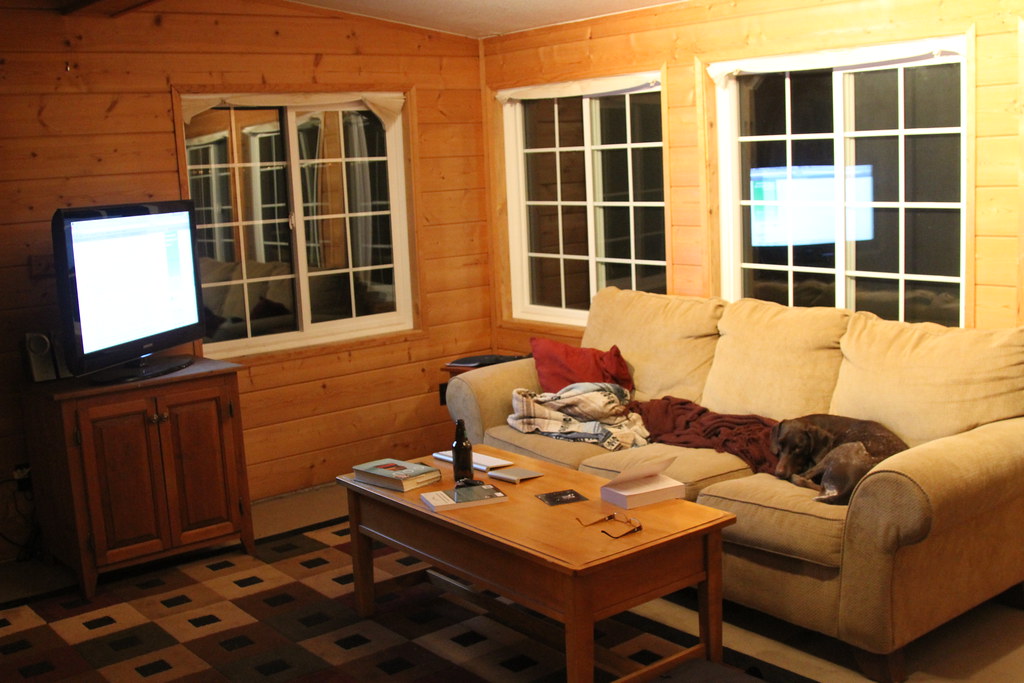
5. **Paint (All Types)**Few home improvement projects are as transformative as a fresh coat of paint, and Home Depot offers what appears to be an endless spectrum of colors and finishes. Yet, if you ask the experts, this is one area where the big box store might leave your walls—and your wallet—feeling less than satisfied. Dan Shirley, owner of Chicago Handyman, is particularly vocal about his reservations.
Shirley’s advice is unequivocal: “I always advise contractors, colleagues, friends and even enemies, avoid the paint at Home Depot. Interior, exterior, deck stain, it doesn’t matter, just stay away from the coatings.” This strong caution stems from consistent issues across various price points and product lines. He describes a pervasive problem with quality that impacts the final look and longevity of your painted surfaces.
According to Shirley, many Home Depot paints, despite promises of a “one-and-done finish,” often “leave streaks or have poor adhesion, bad color matching, faulty cures, excessive cleanup and poor durability.” He recounts his own frustrations, noting, “I have tried every price point and it’s always the same — the paint is too thin and it is runny. It flicks and drips everywhere.” This means more mess, more coats, and ultimately, more time and effort for a less-than-professional result.
Beyond the quality of the paint itself, Shirley highlights application challenges. “Compared to professional paint, it doesn’t load well onto your brush or roller, increasing your labor time. The paint does not level out well when applied with a brush, so streaky finishes will be your new housemate.” This translates to more strenuous work and a less polished outcome, a stark contrast to the smooth, even finish achievable with higher-grade products.
Furthermore, Home Depot may not be the best source for expert guidance. Carr Lanphier, CEO of house painting service Improovy, points out that Home Depot employees, due to needing “a pretty broad base of knowledge,” are “less likely to be paint experts.” He recommends “paint-specific stores like Sherwin-Williams,” where staff are “knowledgeable about paint and house painting specifically,” providing superior advice. For historic renovations, Kevin J. Vander Hyde, vice president at Vander Hyde Services, prefers Benjamin Moore dealers, which “can create custom colors” and carry “traditional finishes like milk paint or linseed oil-based products that weren’t available at big box stores.” These specialized stores also offer crucial tips on handling unique challenges like identifying existing paint types (latex vs. oil) for proper preparation.

6. **Plumbing Faucets (In-House Brands)**Home Depot’s aisles are gleaming with attractive in-house brand faucets, often showcasing sleek designs and competitive price tags that promise to elevate your kitchen or bathroom without breaking the bank. The visual appeal and immediate cost savings can make these fixtures seem like a smart choice for any plumbing upgrade. However, the promise of savings often gives way to disappointment when these faucets fail to deliver on durability and performance.
Experts like Gregg Cantor, president and CEO of Murray Lampert Design, Build, Remodel, and Joseph Hendrickson illuminate the underlying issue. Home Depot’s practice of using “white label products” means they rebrand items manufactured by other companies, and while these “may look the same visually,” the “quality is vastly different from those purchased at a contractor’s wholesale supplier like Ferguson Enterprises.” This distinction is critical, as it points to fundamental differences in material quality and internal components.
Cantor further elaborates that “The tradeoff is a much lower price at Home Depot for fixtures with lower build quality and different internal components with a significantly shorter lifespan.” This often manifests in common user complaints: the faucets “drip persistently,” the “finish may tarnish sooner than expected,” and the “installation can turn into a DIY nightmare with unclear instructions.” These issues quickly erode any initial savings through ongoing frustration and the need for premature replacements.
Ultimately, while the upfront cost of these in-house brand faucets is tempting, the cumulative “maintenance and replacement costs add up” over time. For lasting quality and peace of mind, investing a bit more in a different brand or sourcing from a plumbing supply house is generally advisable. Higher-end faucets also often offer advanced features like voice activation, built-in water filters, and LED temperature indicators, adding both convenience and value that cheaper models simply cannot match.
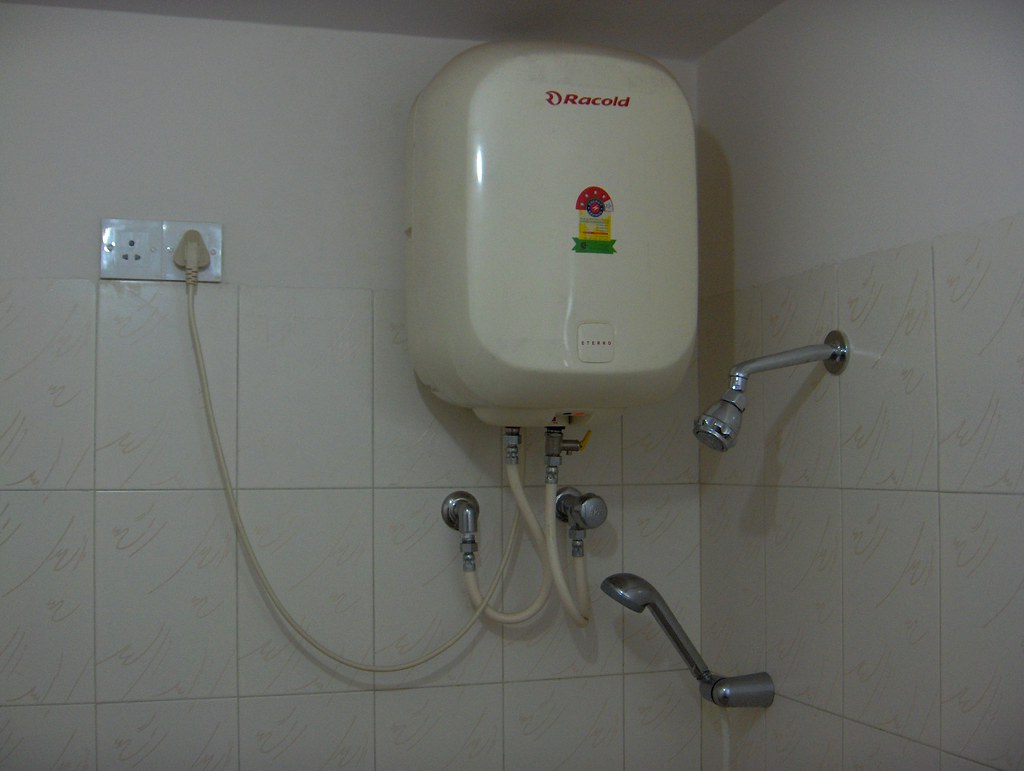
7. **Water Heaters**Choosing a water heater is a significant investment in your home’s comfort and efficiency, but according to experts, opting for Home Depot-branded models could leave you in, well, hot water. While readily available and often attractively priced, these units frequently fall short of the standards set by professional-grade alternatives, leading to potential issues down the line.
Gregg Cantor highlights several critical differences that distinguish big-box water heaters from their more robust counterparts. He notes they often feature “smaller or single anode rods, thinner materials and shorter warranties than commercial grade water heaters.” Anode rods are crucial for preventing corrosion within the tank, so a smaller or singular rod means less protection and a reduced lifespan for the unit as a whole.
Master Plumber Aaron Adams, CEO of Aaron Services, echoes this sentiment, consistently advising his clients to avoid big box store water heaters. He explains, “In general, retail models of water heaters are built at a lower cost, which means lower quality internal components and design.” Adams provides concrete examples of these cost-cutting measures, stating, “The boiler drain on a box store model, for example, is often plastic, which can easily break or leak,” and that the “walls are often thinner or poorly insulated.” These seemingly minor differences can have major implications for durability and performance.
Conversely, professional-grade products typically boast higher-quality components, including a superior anode rod “which means it won’t wear away and need replacing as quickly.” Adams’ bottom line is clear: “water heaters from big box stores don’t perform as well as professional-grade water heaters and don’t last as long.” For a crucial appliance like a water heater, which impacts daily life and safety, durability and reliability should be paramount, making a specialized plumbing supply house the preferred source.”
, “_words_section1”: “1945
Read more about: Seriously, Where Did They Go? 6 Hit Film Series That Mysteriously Vanished From Our Screens!
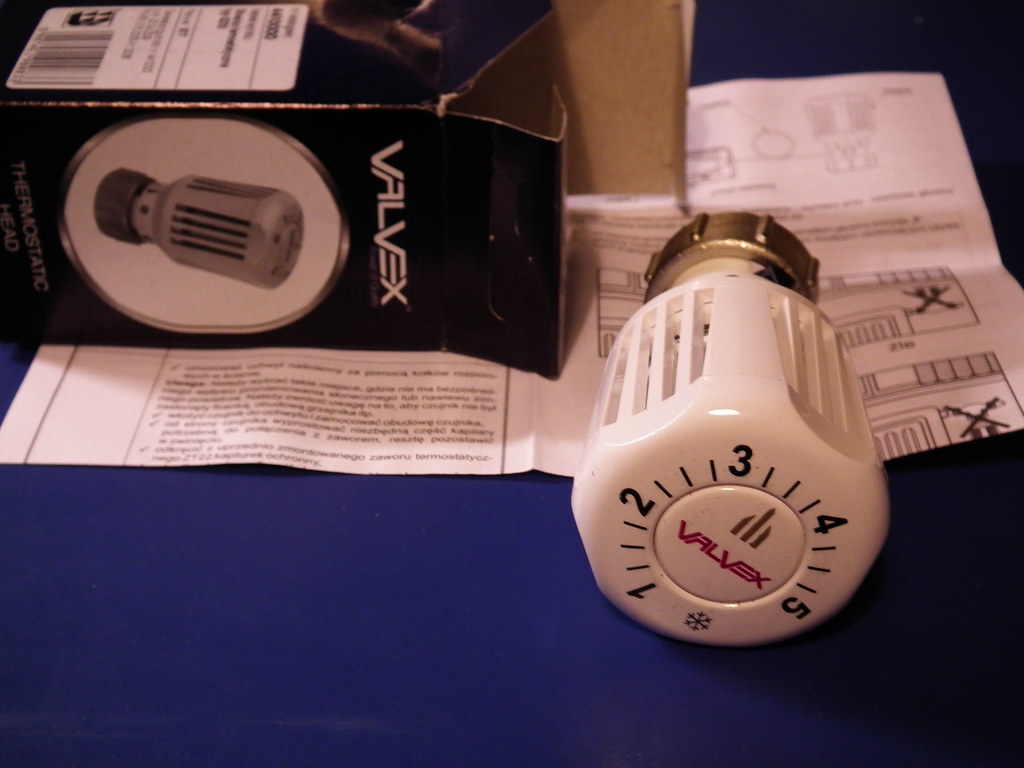
8. **Thermostats for Advanced HVAC Systems**When temperatures fluctuate, having a reliable thermostat is crucial for maintaining comfort and efficiency in your home. Home Depot certainly carries a range of options that can get the job done if you have a fairly basic furnace system. However, for those with more sophisticated HVAC setups, a basic thermostat from the big box store simply won’t cut it.
If your home boasts a more advanced heating and cooling system, such as one with zoning capabilities, multi-stage functionality, or special wiring, you’ll need a thermostat that’s equally advanced. Jon Gilbertsen, an HVAC contractor and president at Chris Heating & Cooling, strongly advises against a generic purchase in these scenarios. He recommends a more bespoke approach, stating, “If your system is more advanced and has zoning, multi-stage, or special wiring, you need to get a thermostat from your HVAC tech so it works right.”
A mismatch between your advanced HVAC system and a basic thermostat can lead to inefficient operation, higher energy bills, and even damage to your valuable heating and cooling equipment. For instance, a zoned heating system, designed to control temperatures in individual rooms, will almost certainly require smart thermostats capable of automatic adjustments, which are often beyond the scope of Home Depot’s entry-level offerings.
Partnering with an HVAC professional ensures that you get a thermostat perfectly compatible with your system’s intricacies. These experts can assess your specific needs, recommend appropriate high-tech solutions, and handle the installation, ensuring optimal performance and longevity for your entire HVAC setup. This tailored approach prevents frustrating inefficiencies and helps you truly maximize your home’s climate control capabilities, making it a smart investment for consistent comfort.
Read more about: Is Your Electric Bill Giving You Nightmares? 14 Epic Ways to Slash Your Costs, Starting Today!
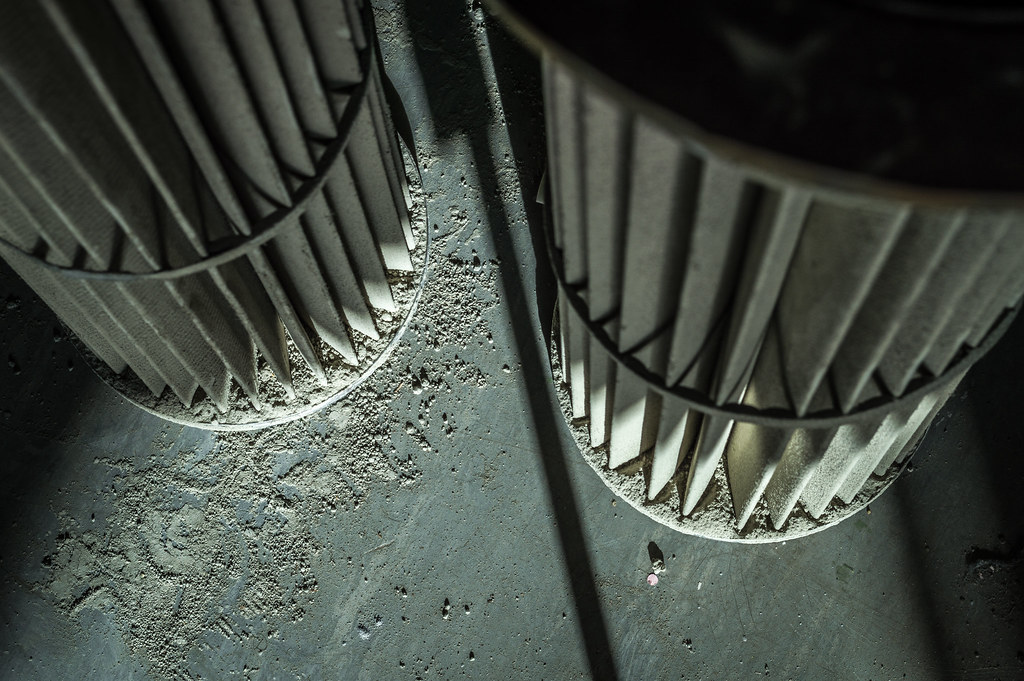
9. **Air Filters**Keeping your home’s air clean is paramount, especially for allergy sufferers or those with pets. Home Depot offers a selection of air filters, including options with high Minimum Efficiency Reporting Value (MERV) ratings, which sound impressive, promising to capture everything from large dust particles to tiny viruses. While a higher MERV rating suggests superior filtration, it’s not always a straightforward upgrade for every HVAC system.
Many homes do well with a MERV 8 filter for general dust and pollen, but individuals with allergies or health concerns often seek filters with MERV 11 or 13. The allure of catching more airborne particles is understandable, yet as Gilbertsen acknowledges, “it’s often bad for the system if you buy it without checking the compatibility.” A filter that’s too restrictive can strain your HVAC system, reducing airflow and potentially leading to costly repairs down the line.
Before you grab the highest MERV filter you see, a little homework is essential. Consulting your HVAC system’s owner’s manual is the first step to determine the maximum MERV rating your unit can safely handle without compromising its efficiency or lifespan. Overloading your system with an incompatible filter can lead to reduced airflow, increased energy consumption, and premature wear on components, negating any perceived benefits.
Beyond MERV ratings, filter size is another critical factor. Filters come in a wide range of dimensions, and an improper fit can allow unfiltered air to bypass the system entirely. Always check the exact length, width, and depth specified in your HVAC manual or on the manufacturer’s website. If measuring yourself, round up to the nearest half-inch to ensure a snug fit, guaranteeing that all the air passing through your system is properly filtered for a healthier home environment.
Read more about: Navigating Hyundai Ownership: A Comprehensive Guide to Maintenance, Models, and Premier Dealership Services for Informed Consumers
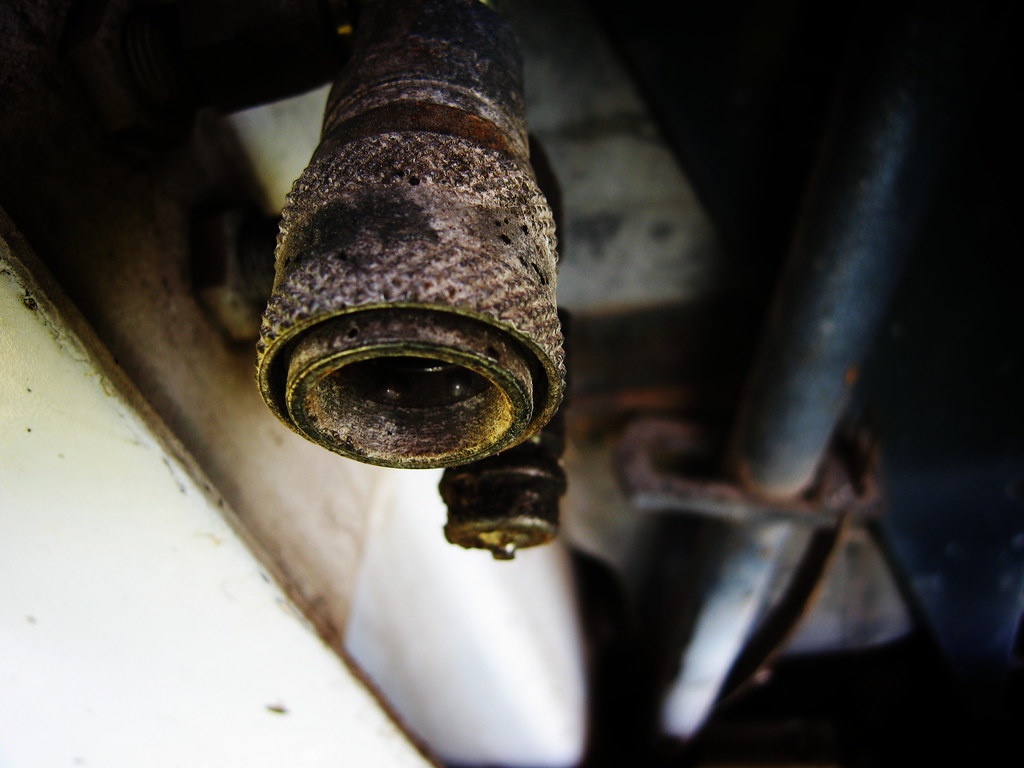
10. **Complex Pipe Fittings**A sudden kitchen pipe leak can send anyone scrambling to Home Depot for a quick fix, and for basic repairs or simple projects like replacing a kitchen sink, the retailer often has the standard fittings you need. However, if your plumbing project involves a massive renovation, intricate custom work, or the delicate restoration of an older home, relying solely on Home Depot for pipe fittings can quickly turn into a frustrating “pipe dream.”
Jon Gilbertsen highlights a significant limitation: “for a remodel or older plumbing, Home Depot won’t have every fitting you need, meaning you’re chasing parts at other stores.” This scenario isn’t just an inconvenience; having to cobble together a mix of fittings from various sources can lead to issues with compatibility and material differences. Mixing metals like brass, copper, and steel in a single plumbing run can accelerate galvanic corrosion, causing leaks and costly damage over time.
For projects requiring a comprehensive range of high-quality, consistently matched parts, Gilbertsen strongly recommends bypassing the big box store and starting at a dedicated plumbing supply house. These specialized retailers typically stock a far broader selection of fittings in various materials and sizes, ensuring you can find everything you need in one go. This not only saves you the time and hassle of hunting for obscure parts but also guarantees better material consistency.
Moreover, plumbing supply houses often employ staff with deep, specialized knowledge of plumbing systems. Unlike general store employees, these experts can provide invaluable guidance on complex installations, material compatibility, and best practices, helping you choose the right fittings for a durable and leak-free system. Investing in quality parts and expert advice upfront from a specialty supplier can prevent future headaches and ensure your plumbing project stands the test of time.
Read more about: A Master Plumber’s Blueprint: Unveiling 13 Essential Power Tool Upgrades for Your 2025 Workshop

11. **Hose Bibs**Those outdoor water faucets, commonly known as hose bibs, might seem like a simple purchase. Home Depot certainly stocks them, but according to Jon Gilbertsen, their collection often “doesn’t really hold water”—metaphorically speaking, of course. The issue lies in the quality of the components, which can lead to premature failure and unwanted leaks, especially when exposed to the elements.
Gilbertsen explains that Home Depot’s hose bibs often feature “thinner bodies and cheaper washers,” which are the crucial rubber pieces designed to prevent leaks. These lower-quality components are more susceptible to wear and tear when subjected to harsh weather conditions, such as freezing winters or intense summer heat. This means you could be facing drips, leaks, or even burst pipes much sooner than you’d expect from a higher-quality alternative.
For a fixture that needs to withstand constant exposure to environmental hazards and frequent use, durability is key. This is why Gilbertsen, and other experts, advocate for purchasing hose bibs from a specialized plumbing supply store. There, he assures, “you can get an option that will withstand freezing winter and years of use without causing you problems.” This advice is particularly vital for homeowners in regions experiencing extreme temperatures.
When selecting a hose bib, consider your local climate and usage needs. In milder areas, a standard, more economical hose bib might suffice. However, if you face harsh winters, a frost-free version is a non-negotiable to prevent costly pipe bursts. Additionally, you’ll want to choose between a user-friendly quarter-turn handle or the precise control of a multi-turn, and opt for durable materials like stainless steel or brass over cheaper plastic varieties for long-lasting performance and peace of mind.
Read more about: 7 Outdated Items May Aging You and How to Change Them for a Youthful Look

12. **Countertops**Embarking on a kitchen remodel often includes the exciting decision of new countertops, whether you’re eyeing quartz, granite, soapstone, or laminate. While Home Depot displays a tempting array of options and deals, experts caution that their pricing and overall value for countertops can often be surpassed elsewhere. This is one area where a “big box” approach might leave you feeling shortchanged.
Jonathan Palley, CEO at Clever Tiny Homes, points out a common misconception: “You’d think that a big box store would make up for their lack of expertise and variety with lower prices, but you can find comparable pricing and a much better product, not to mention good advice and installation help, at countertop specialty outlets.” This suggests that the perceived savings at Home Depot often don’t translate into the best overall deal when factoring in quality, expertise, and support.
Beyond pricing, durability is a crucial factor that homeowners sometimes overlook in their eagerness for a fresh look. While a laminate countertop might be lighter on the wallet upfront, its lifespan typically maxes out at around 30 years. In contrast, investing in natural stone options like granite or quartz can provide up to a century of reliable service, making them a much more cost-effective choice in the long run despite a higher initial investment.
Choosing countertops isn’t just about aesthetics or price; it’s about making a durable investment for your home. Specialty countertop outlets offer not only competitive pricing but also a broader selection of materials, expert guidance on the pros and cons of each, and professional installation services. Their staff possess in-depth knowledge to help you navigate critical considerations like material properties, maintenance requirements, and the best fit for your lifestyle, ensuring a choice that truly lasts.
Read more about: FDA Issues Nationwide Salmonella Alert: In-Depth Look at Cucumber Outbreak and Recalls
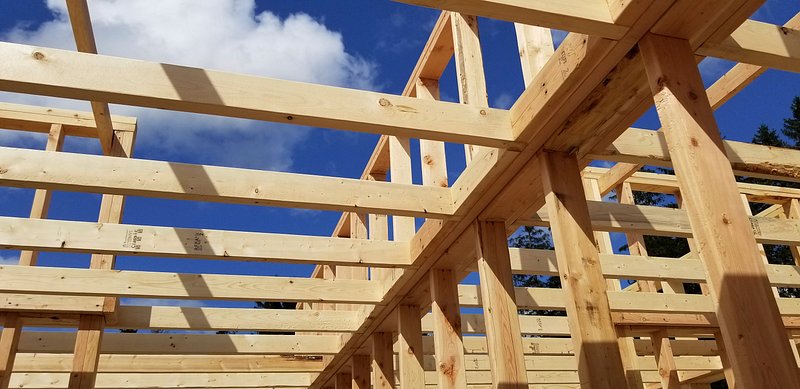
13. **Lumber for Structural Work**When it comes to framing your home or building a structurally sound addition, the quality of your lumber is non-negotiable. While Home Depot certainly has aisles filled with timber, experts like Samuel Khokhlan, owner at BlueChip Builders, offer a stark warning about relying on it for critical structural projects. His advice is clear and witty: “If your goal is to build a Gaudi-style curved wall, go ahead and buy your lumber from the Depot, but if you’re trying to build a reliable, strong, straight wall — do yourself a favor and go shop at a local lumber yard.”
Khokhlan’s quip underscores a serious point: the consistency and straightness of lumber at big box stores can often be subpar, making it unsuitable for applications where precision and structural integrity are paramount. Warped or twisted boards can compromise the strength of a wall, make accurate framing nearly impossible, and ultimately lead to significant problems down the road, from uneven surfaces to structural instability.
A local lumber yard, in contrast, often provides superior quality lumber at prices comparable to, or even better than, those at Home Depot. These specialized suppliers typically offer a wider selection of wood grades, allowing you to specify the exact quality you need for your project. This ensures you’re getting boards that are straight, strong, and free from excessive defects like large knots or splits, which are crucial for reliable construction.
For critical work, distinguishing between hardwoods (like maple or oak, ideal for cabinets, flooring, and decks) and softer woods (like cedar or pine, suited for ceilings or window frames) is essential. A specialized lumber yard can guide you through these choices, ensuring you select the right type and grade of wood for structural elements, guaranteeing durability and safety. This attention to detail from a dedicated supplier is an investment in the long-term integrity of your home.
Read more about: Your Essential Home Toolkit: 14 Must-Have Tools Every New Homeowner Needs for Smart Repairs
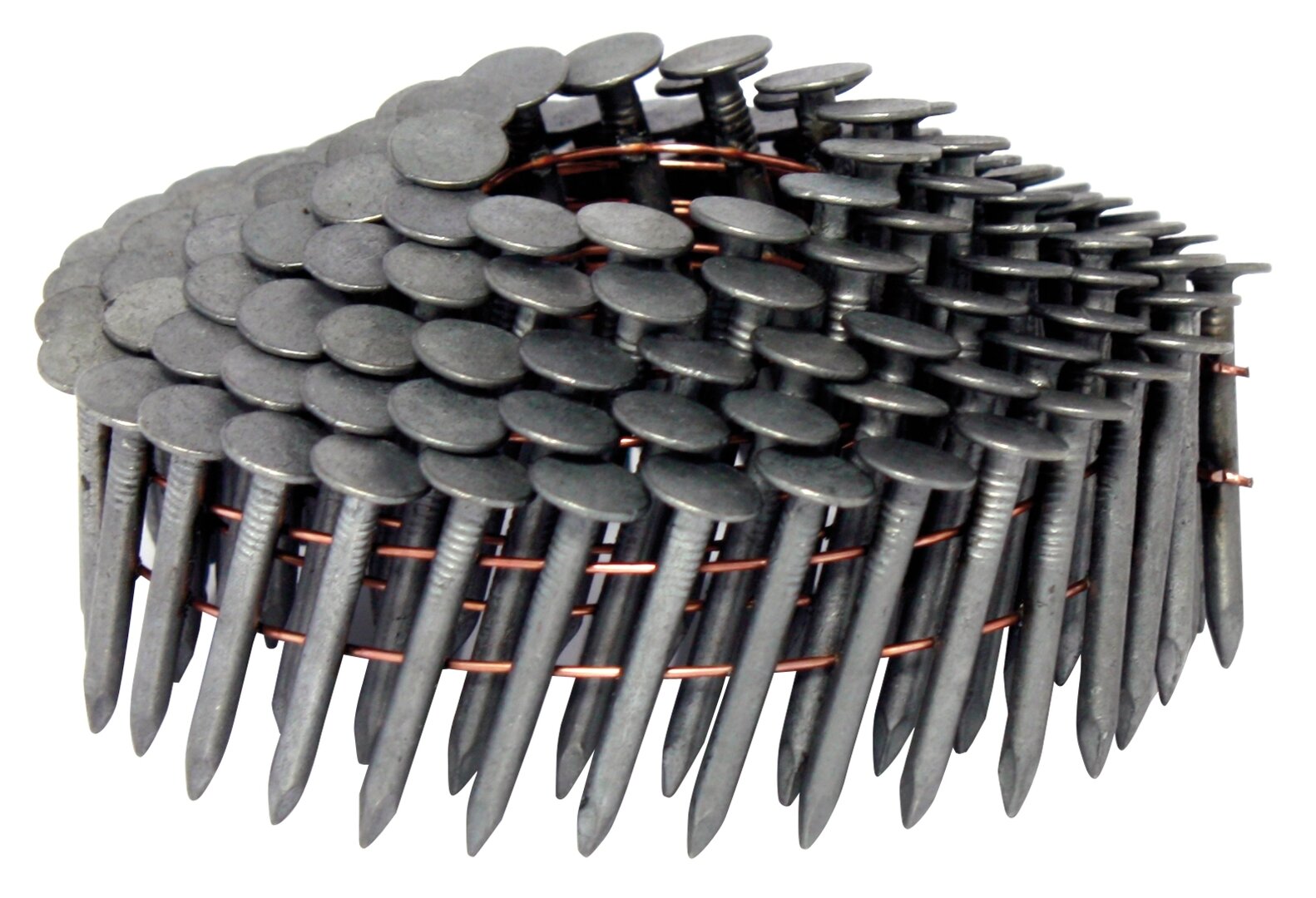
14. **Roofing Nails**When it comes to securing your roof, the importance of reliable fasteners cannot be overstated. Roofing nails from Home Depot, however, often don’t quite “nail it” in terms of consistent quality and durability, according to experts. This can have serious implications for the longevity and integrity of your roof, leaving it vulnerable to the elements sooner than expected.
Michael Feazel, CEO at Roof Maxx, has observed significant issues with big box retailer nails. He states, “I’ve seen nails with weak galvanization that rust prematurely or have heads that don’t seat properly.” Premature rusting compromises the structural hold of the nail, potentially allowing shingles to loosen or blow off during high winds. Nails with improperly seated heads can also damage shingles or fail to secure them firmly, leading to leaks and reduced roof lifespan.
For a wider selection of more durable and consistently high-quality brands, Feazel strongly recommends turning to dedicated roofing retailers such as ABC Supply or QXO (formerly Beacon Building Products). These specialized suppliers understand the critical role of every component in a roofing system and stock products designed to withstand harsh weather conditions and provide long-term protection.
When choosing roofing nails, prioritize materials that offer robust rust resistance, such as galvanized steel, stainless steel, or copper. Furthermore, opting for nails with ring shanks provides superior holding power, particularly crucial in areas prone to high winds, ensuring your shingles remain securely in place. The type of roof you’re installing and the required nail length are also vital considerations, and knowledgeable staff at specialty retailers can guide you through these factors, helping you safeguard your most important asset.
Read more about: Your Ultimate Guide to the Best TVs of 2025: Decoding the Tech and Finding Your Perfect Screen
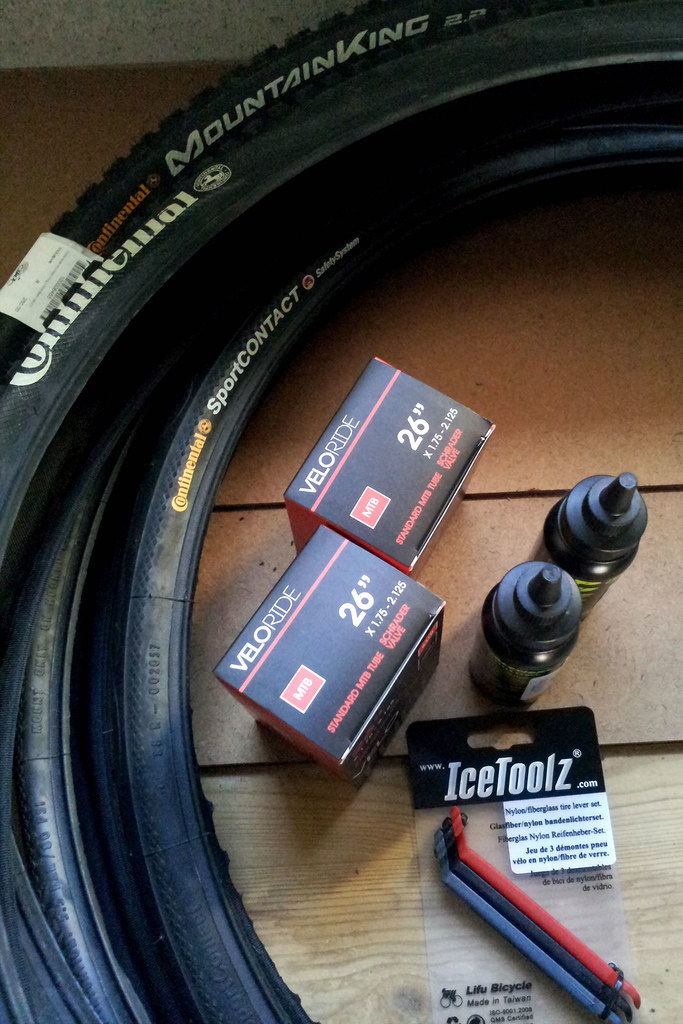
15. **Entry-Level Caulking and Sealants**For crucial exterior sealing tasks like around windows, doors, or making roof repairs, the quality of your caulking and sealants is paramount. While Home Depot carries an array of options, experts like Todd Stephenson, co-founder of Roof Quotes, and Michael Feazel of Roof Maxx, caution against their entry-level or general-purpose products for these critical applications. These items often lack the professional-grade durability needed to withstand extreme weather.
Stephenson recounts his experience with some of Home Depot’s asphalt-based sealants, noting, “they dry too fast when applied in the summer heat, causing early cracking.” This rapid drying prevents a proper seal from forming and leads to premature cracking, leaving gaps that allow water and air infiltration. Feazel echoes this, stating that while the store “carries some reputable brands, but the majority of their stock caulks and sealants are entry-level or general-purpose options.”
For lasting protection around roof penetrations or windows, experts consistently recommend higher-grade alternatives. Feazel’s personal preference is a durable NP1 sealant or OSI Quad Max, which he, too, sources from a professional supply store. Stephenson agrees that niche retailers are the way to go, explaining that “A commercial supplier will carry better grade polyurethane or modified bitumen sealants that can remain flexible for years and will adhere to a wider variety of substrates.”
Choosing the right sealant and applying it correctly are both vital steps in protecting your home. Beyond selecting a professional-grade product, it’s essential to avoid common mistakes like layering new caulk over old, cutting too much of the tip, or neglecting regular replacement. Investing in superior sealants from a specialty supplier ensures a flexible, long-lasting barrier against wind and rain, safeguarding your home from potential water damage and improving energy efficiency for years to come.
So there you have it: a comprehensive guide from contractors and experts on where to draw the line at Home Depot. While the big orange box remains an indispensable resource for countless DIY projects and everyday essentials, knowing which items warrant a trip to a specialized supplier can save you significant time, money, and frustration in the long run. Empower yourself with this knowledge, make informed decisions, and ensure your home improvement projects stand the test of time, built on a foundation of quality and expert advice. Happy renovating, and may your projects always bring satisfaction, not regret!



